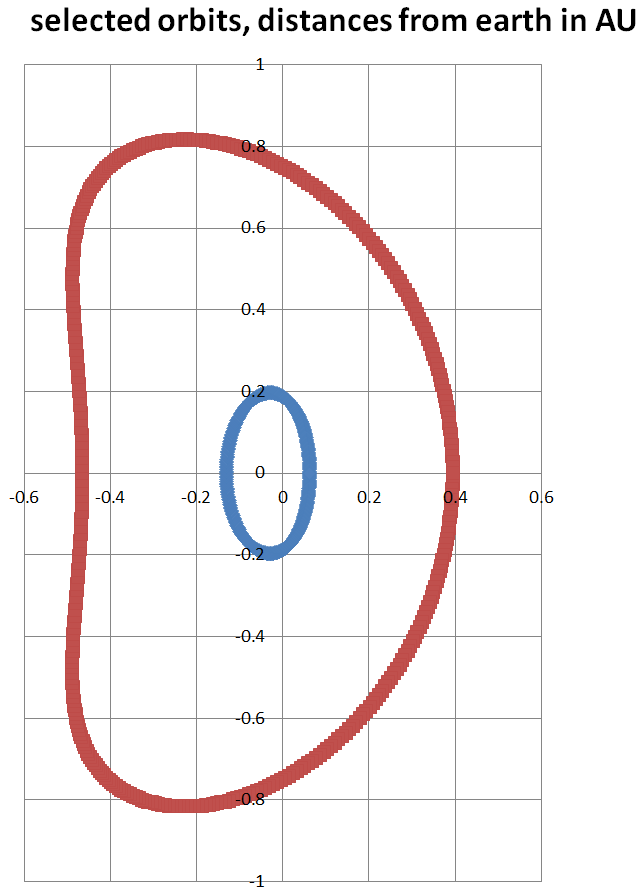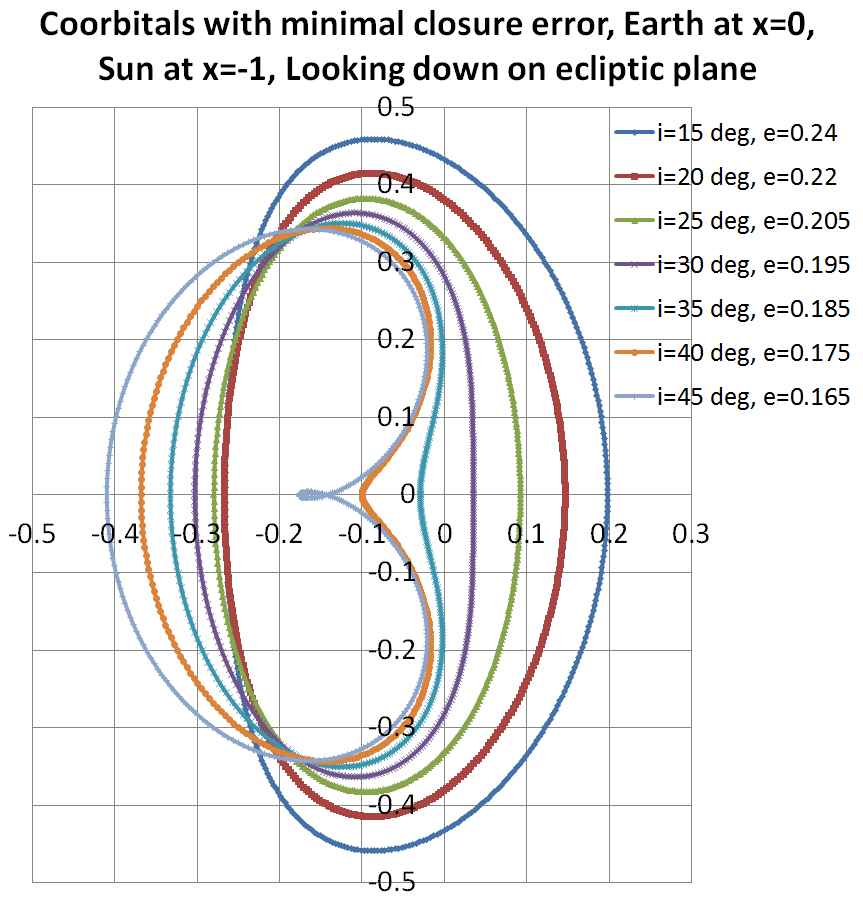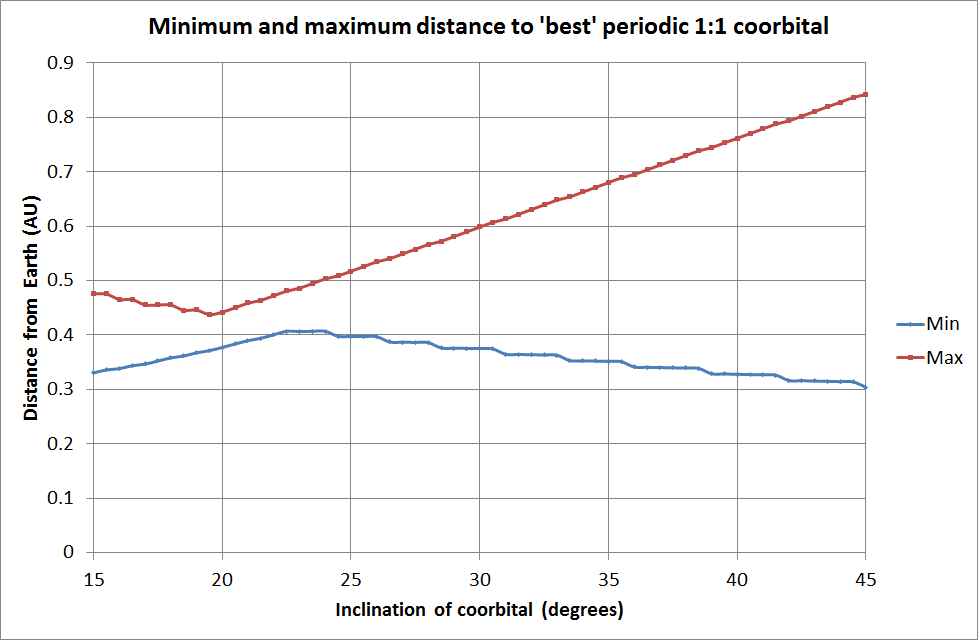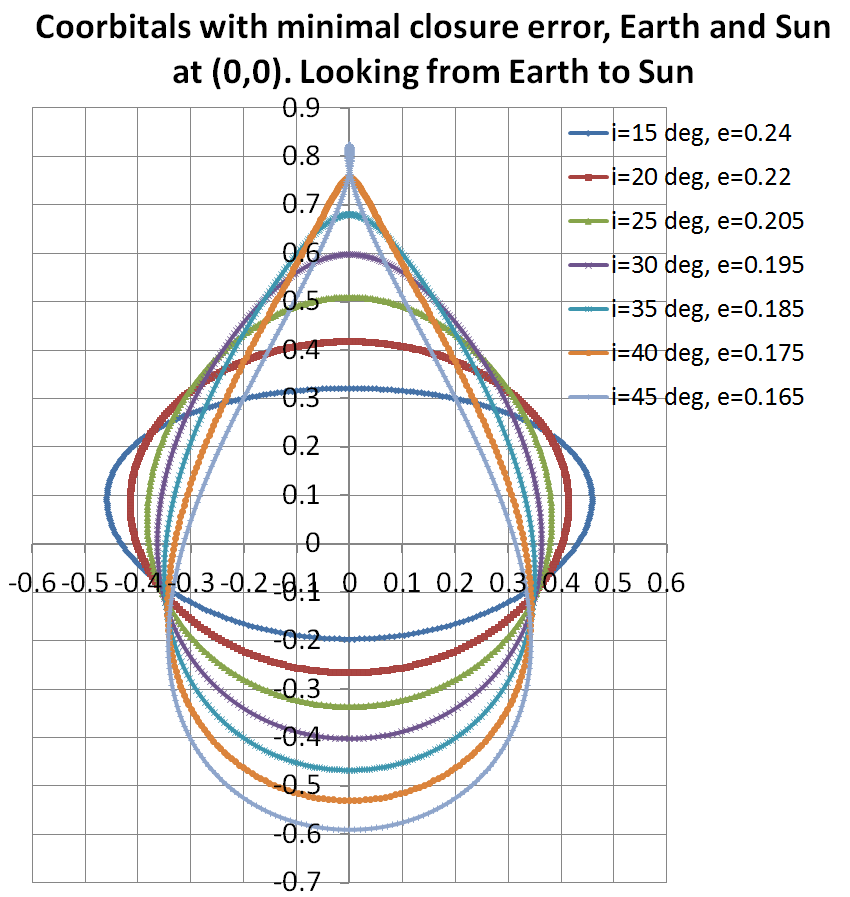Direct continuation from:
https://tokyo3.org/forums/holiday/topics/12088/
mollwollfumble said:
mollwollfumble said:
mollwollfumble said:This figure seems to suggest that for the 15 to 45 degrees I’m interested in, a whole range of eccentricities (0.35 to 0.99) are OK, dark symbols. But their criterion for OK, libration amplitude less than 50 degrees, is way too lax. I want a libration amplitude of zero, ie. a periodic orbit.
From A numerical investigation of coorbital stability and libration in three dimensions
Fingers crossed i can use this software for 3-body interactions.
https://ui.adsabs.harvard.edu/link_gateway/2014Icar..231..273G/EPRINT_PDF
Atlas of three body mean motion resonances in the Solar System
We present a numerical method to estimate the strengths of arbitrary three body mean motion resonances between two planets in circular coplanar orbits and a massless particle in an arbitrary orbit. This method allows us to obtain an atlas of the three body resonances in the Solar System showing where are located and how strong are thousands of resonances involving all the planets from 0 to 1000 au.
Code (Fortran 77 yippee) in http://www.fisica.edu.uy/~gallardo/atlas/
How about this?
For each inclination (0.5 degree intervals from 15 to 45 degrees)
For each eccentricity (um, 0.1 to 0.45 by intervals of 0.005)
Calculate apogee radius and speed from heliocentric orbit
Using Newton’s laws, calculate 3-body orbit by integration until next apogee
Adjust (increase slightly) initial speed until final apogee is as close as possible to initial apogee
From final orbit get final eccentricity and min and maximum distance from Earth
RepeatThat way will give me a 2-D map of closeness to a periodic orbit as a function of inclination and apogee radius.
And I can plot maximum distance from Earth vs closeness to a periodic orbit.
Worked better than I would have believed possible. I was prepared to accept a lack of orbit closure in the ballpark of 10,000 km per year (one Earth diameter) as acceptable. I’m getting a periodic orbit closure error of order 1 km per year! And a periodic orbit velocity closure of order only 1 m/s per year. Amazing.
Even better, there is a unique best eccentricity of orbit for each inclination.
Typical orbits, as viewed looking down on the plane of the ecliptic. Earth is at (0,0). Smaller orbits are like a squashed ellipse. Larger orbits are jelly-bean shape in this view, with horns pointed towards the 60 degree Lagrangian points.
Smaller orbits have the advantage of faster Earth-satellite communications. Larger orbits have the advantage of better view past the inner zodiacal light.

Error or orbit closeuse, as a function of ellipticity and inclination (15 to 45 degrees inclination). There’s a unique best eccentricity for each inclination, and even a lack of closure of 30 km is very small.
Locus of best eccentricity at each inclination.



